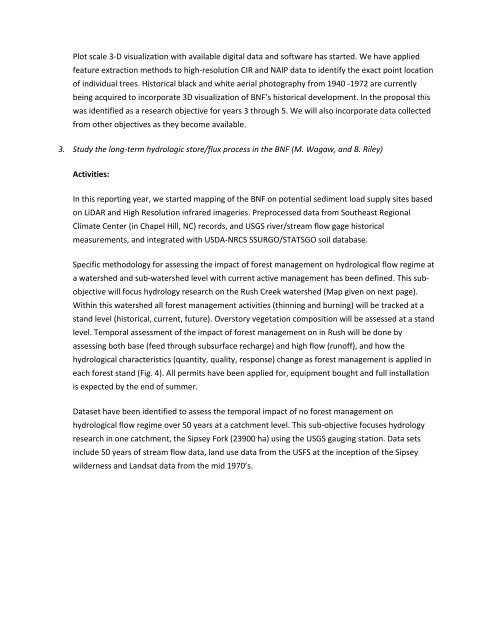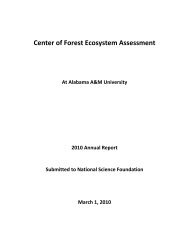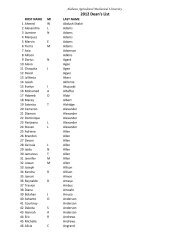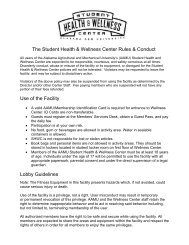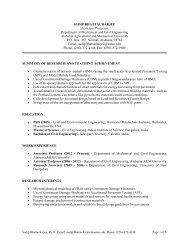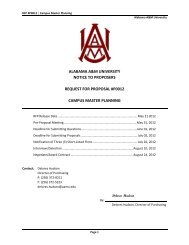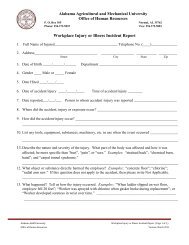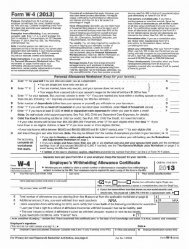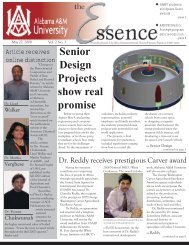2012 CREST Annual Report - Alabama A&M University
2012 CREST Annual Report - Alabama A&M University
2012 CREST Annual Report - Alabama A&M University
- No tags were found...
You also want an ePaper? Increase the reach of your titles
YUMPU automatically turns print PDFs into web optimized ePapers that Google loves.
Plot scale 3-D visualization with available digital data and software has started. We have appliedfeature extraction methods to high-resolution CIR and NAIP data to identify the exact point locationof individual trees. Historical black and white aerial photography from 1940 -1972 are currentlybeing acquired to incorporate 3D visualization of BNF’s historical development. In the proposal thiswas identified as a research objective for years 3 through 5. We will also incorporate data collectedfrom other objectives as they become available.3. Study the long-term hydrologic store/flux process in the BNF (M. Wagaw, and B. Riley)Activities:In this reporting year, we started mapping of the BNF on potential sediment load supply sites basedon LiDAR and High Resolution infrared imageries. Preprocessed data from Southeast RegionalClimate Center (in Chapel Hill, NC) records, and USGS river/stream flow gage historicalmeasurements, and integrated with USDA-NRCS SSURGO/STATSGO soil database.Specific methodology for assessing the impact of forest management on hydrological flow regime ata watershed and sub-watershed level with current active management has been defined. This subobjectivewill focus hydrology research on the Rush Creek watershed (Map given on next page).Within this watershed all forest management activities (thinning and burning) will be tracked at astand level (historical, current, future). Overstory vegetation composition will be assessed at a standlevel. Temporal assessment of the impact of forest management on in Rush will be done byassessing both base (feed through subsurface recharge) and high flow (runoff), and how thehydrological characteristics (quantity, quality, response) change as forest management is applied ineach forest stand (Fig. 4). All permits have been applied for, equipment bought and full installationis expected by the end of summer.Dataset have been identified to assess the temporal impact of no forest management onhydrological flow regime over 50 years at a catchment level. This sub-objective focuses hydrologyresearch in one catchment, the Sipsey Fork (23900 ha) using the USGS gauging station. Data setsinclude 50 years of stream flow data, land use data from the USFS at the inception of the Sipseywilderness and Landsat data from the mid 1970’s.


